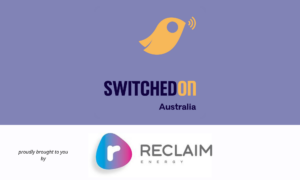The $610 million “gas” plant at Kurri Kurri that federal minister Angus Taylor insists is so essential to the grid is likely to burn a lot of diesel, and would likely run on diesel fuel only for at least its first six months because of an inadequate gas connection.
An Environmental Impact Statement lodged with the NSW government seeks approval for the development of a 750MW open-cycle gas power station with diesel back-up near Kurri Kurri, which Taylor has argued is required to fill a gap left by the outgoing AGL Liddell coal generator.
But the 358-page document, put together by consultants Jacobs, reveals there could be “up to six months of diesel-only operation during 2023 before the natural gas supply to the proposal site is completed.”
It also seeks permission to burn costly and expensive diesel for up to 175 hours a year in the normal operations, and gas for around five times that much – although it also reveals the peaking plant will be rarely used, operating at a “capacity factor” of around 2 per cent.
The revelation that the Morrison government’s shiny new dispatchable power plant would run – at least partly – on the very same costly and dirty fuel that network owners and miners in Western Australia and Queensland are working overtime to rid from their power profiles adds a new dimension to the hugely controversial plan.
“The Proposal is seeking approval for a capacity factor of up to 10 per cent on natural gas and up to two per cent on diesel (providing a combined capacity factor of 12 per cent) in any given year. However, it is expected that likely operations would result in a capacity factor of 2 per cent in any given year,” the documents say.
“The indicative total annual water demand for operation of the Proposal is approximately 80 ML based on a 10 per cent capacity factor on gas and 2 per cent capacity factor on diesel (total of 1,051 hours per year, comprising approximately 876 hours on gas and 175 hours on diesel fuel).”
Apparrently undaunted by this, the Jacobs report, commissioned by federal government-owned utility Snowy Hydro, repeats Taylor’s argument that the Kurri Kurri plant is necessary to keep the lights on – an argument that has not been supported by either the Australian Energy Market Operator or the Energy Security Board.
The EIS describes the Kurri Kurri project as “vitally important” in the transition to renewable energy, and of “ultimate benefit” to the environment and future generations, despite its cost, and its operation emissions, which the report calculates at 509,299 tonnes of CO2e a year.
The report also repeats a number of the Morrison government’s favourite myths and misconceptions about the basic workings of the energy market, and the abilities and roles of new technologies such as large-scale battery storage will in have a majority renewable system.
“Without dispatchable and firming generation or grid scale storage, a power system that is solely reliant on intermittent renewable generation will have unacceptable levels of customer supply failure,” the statement says.
“Batteries are inherently limited by their storage capacity (megawatt hours or MWh) relative to their MW capacity, dictating how long they can operate in a single continuous period of generation.
“Energy storage systems such as those using hydrogen are not presently economical. Conversely, a peaking power station using natural gas virtually has no restriction on when it can produce dispatchable energy within a day, and the duration for which it can continuously provide that energy across that day,” the paper says.
Overall, the executive summary concludes, the proposal’s benefits, “including dispatchable electricity and other network services, are considered to outweigh the limited environmental and social impacts identified.”
The EIS comes as federal energy minister Angus Taylor and his boss rapidly lose popular support for the project, which they have repeatedly threatened to build if the private sector failed to lock in development of 1000MW of “dispatchable” energy projects by April 30 – a deadline that has been and gone.
Even the Murdoch media’s Daily Telegraph is growing sceptical, with an article on Thursday speculating that the Kurri Kurri plant – which got no specific mention in Tuesday’s federal budget – would be fully funded by a $3.8 billion government “war chest.”
To add to the confusion, the Budget did allocate funds to other proposed gas projects, including $30 million to the plans of billionaire Andrew “Twiggy” Forrest to develop a 650-megawatt gas and hydrogen power station in Port Kembla, a couple of hundred kms down the NSW coast from Kurri Kurri.
Separately, CEP.Energy, chaired by former NSW Labor premier Morris Iemma, has raised plans to build what it says will be the “world’s biggest battery” – 1,200MW – at Kurri Kurri.
“The Kurri Kurri gas plant is turning into a dog’s breakfast, with no dedicated funding provided in the budget and no formal green light from the government or Snowy Hydro,” said The Australia Institute’s climate and energy program director, Richie Merzian.
“The 2021 Budget was not shy of giving money to gas projects, with Twiggy Forest and Energy Australia clear beneficiaries, so it’s curious that nothing was provided to Snowy Hydro to build the Kurri Kurri gas plant.
“The private sector failed to meet Minister Taylor’s deadline of 30 April for new gas projects, so either it wasn’t a real deadline or the Kurri Kurri project has stalled,” Merzian added in comments to RenewEconomy on Thursday.
“If the Kurri Kurri gas power station is being funded from the $3.8 billion for ‘decisions taken and not yet disclosed’, will taxpayers cover the whole $610 million cost and why are we left guessing?
Merzian also questioned why the government would need to fund a project it was convinced that the market needed – why not let the private sector foot the bill?
“These subsidies to gas power stations are occurring despite contradictory advice and analysis from the government’s own experts and the Australian Energy Market Operator (AEMO),” Merzian said.
“The government originally proposed the 1000MW power station to replace the Liddell coal power station despite its own Liddell Taskforce having found that committed and probable projects in NSW were ‘more than sufficient’ to ensure reliability.
“AEMO found there was a maximum potential shortfall of only 154MW, far less than the capacity of the proposed power station, and the CEO of the government’s Energy Security Board (ESB) commented that a new gas power in the Hunter ‘doesn’t stack up’ would provide ‘expensive energy’ and it will not reduce electricity prices.”










